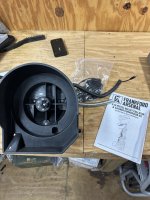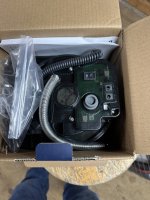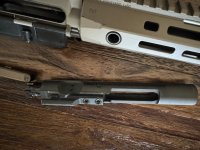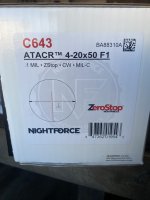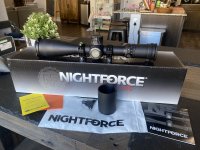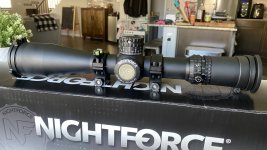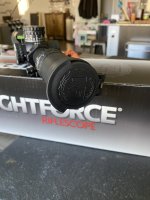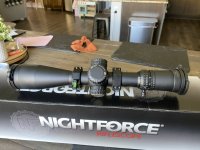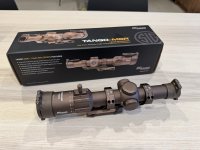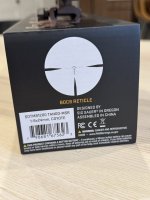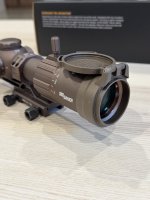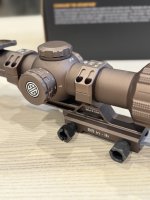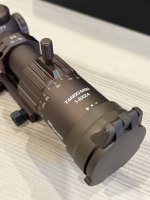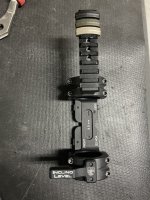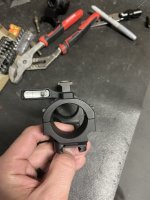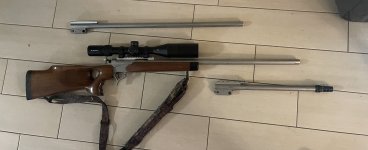Seekins SP10 Review. Craddock/Proof Research
- By Bigjake83
- Semi-Automatic Rifles
- 128 Replies
Starting with the basic SP10 rifle as it came from the Factory with the standard rifle length gas system.

First with the bad.
Unfortunately the version I received had the Rifle Length Gas and no matter of fine tuning with the Gas or buffer weight could fix the abuse it played on the brass and crude cycling and bolt bounce that started premature wear on the rear of the bolt lugs.

The OEM Timney trigger had substantial and very noticeable creep when doing a slow controlled trigger pull so I replaced it with a TriggerTech AR10 Diamond. When I first received the rifle it had a bent gas tube that was binding inside the gas key of the BCG. I didn't care much for the barrel contour after the .750 gas block journal it would step down to .730 to the muzzle and seemed to suffer from poor Barrel harmonics and substantial barrel whip.

After encountering these issue one phone call to Seekins they completely revamped the rifle no questions asked with the exception of the barrel as it was thier current barrel offering and it was still shooting satisfactory, but bar none Seekins Customer Service is one of the best in the industry.
Now for the positives.
The Receiver Set and handguard have been phenomenal to date and after several thousand rounds the receivers still lock up tight with absolutely no slop. The 15" Handguard is perfect for shooting from barricades and fits a Arca rail perfectly.
The ATC Muzzle brake was surprisingly effective with maintaining sight recovery.
Out of the box as it originally came it maintained .75 MOA with all Harnady ammo but had unexplained flyers.
At this point I decided to pull the barrel and BCG and replace it with 22" Craddock Bartlein with the +2 gas system headspaced to a JP Bolt, APA Gen3 Little Bastard adjustable muzzle brake and a Lantac Carrier with the oversized rear boss and forward facing gas vents and a SA AGB. The end result is the softest shooting 6.5CM I've even owned.
The results were nothing short of spectacular.




But unfortunately the gas port in the the Craddock barrel took a catastrophic turn for the worst and developed a burr at the gas port that was unrepairable.



After contacting Craddock the current wait time for a barrel replacement would of put me 12 months out, but again with exceptional customer service Paul issued a full refund.
At this point instead of waiting 12 months I opted to go with a 24" Proof Research Carbon Fiber barrel that has shown to be a solid performer right out of the gate the PRCF barrel shot .5 MOA with Factory ammo.

After a healthy 200rd break-in the PRCF has become one of my top performers. I initially had some hesitation with how the barrel was performing with the groups opening up especially under high heat. It turns out is was just mirage causing sight disruption the illusion of the groups opening up.
First round of load development.

The below groups were shot today solidifying several load options that are all Sub .5 MOA


The Seekins SP10 has shown to be a true performer no matter what tube I install.
To date Seekins has rectified the earlier discrepancies with the addition of a + 1.5 Gas system and a updated bolt. I have absolutely no reservations recommending the SP10 to any shooter.
Thanks for reading.
Jake
First with the bad.
Unfortunately the version I received had the Rifle Length Gas and no matter of fine tuning with the Gas or buffer weight could fix the abuse it played on the brass and crude cycling and bolt bounce that started premature wear on the rear of the bolt lugs.
The OEM Timney trigger had substantial and very noticeable creep when doing a slow controlled trigger pull so I replaced it with a TriggerTech AR10 Diamond. When I first received the rifle it had a bent gas tube that was binding inside the gas key of the BCG. I didn't care much for the barrel contour after the .750 gas block journal it would step down to .730 to the muzzle and seemed to suffer from poor Barrel harmonics and substantial barrel whip.
After encountering these issue one phone call to Seekins they completely revamped the rifle no questions asked with the exception of the barrel as it was thier current barrel offering and it was still shooting satisfactory, but bar none Seekins Customer Service is one of the best in the industry.
Now for the positives.
The Receiver Set and handguard have been phenomenal to date and after several thousand rounds the receivers still lock up tight with absolutely no slop. The 15" Handguard is perfect for shooting from barricades and fits a Arca rail perfectly.
The ATC Muzzle brake was surprisingly effective with maintaining sight recovery.
Out of the box as it originally came it maintained .75 MOA with all Harnady ammo but had unexplained flyers.
At this point I decided to pull the barrel and BCG and replace it with 22" Craddock Bartlein with the +2 gas system headspaced to a JP Bolt, APA Gen3 Little Bastard adjustable muzzle brake and a Lantac Carrier with the oversized rear boss and forward facing gas vents and a SA AGB. The end result is the softest shooting 6.5CM I've even owned.
The results were nothing short of spectacular.
But unfortunately the gas port in the the Craddock barrel took a catastrophic turn for the worst and developed a burr at the gas port that was unrepairable.
After contacting Craddock the current wait time for a barrel replacement would of put me 12 months out, but again with exceptional customer service Paul issued a full refund.
At this point instead of waiting 12 months I opted to go with a 24" Proof Research Carbon Fiber barrel that has shown to be a solid performer right out of the gate the PRCF barrel shot .5 MOA with Factory ammo.
After a healthy 200rd break-in the PRCF has become one of my top performers. I initially had some hesitation with how the barrel was performing with the groups opening up especially under high heat. It turns out is was just mirage causing sight disruption the illusion of the groups opening up.
First round of load development.
The below groups were shot today solidifying several load options that are all Sub .5 MOA
The Seekins SP10 has shown to be a true performer no matter what tube I install.
To date Seekins has rectified the earlier discrepancies with the addition of a + 1.5 Gas system and a updated bolt. I have absolutely no reservations recommending the SP10 to any shooter.
Thanks for reading.
Jake



